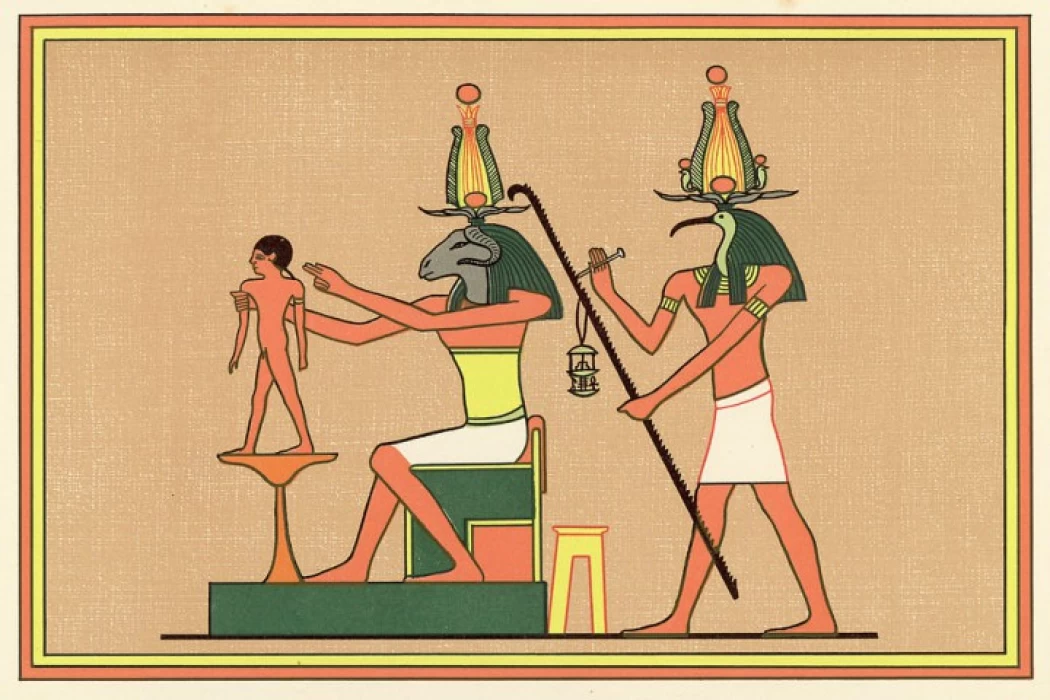
水神卡努姆
神卡农
这个神被称为在下界流传的水域之神,就这样,当太阳在黑夜的黑暗中沉船时,Khnum不知不觉地加入了它。
在埃及宗教中,这位神最杰出的功能之一是创造生物、人和神,这要归功于他的陶工之轮,许多人声称原始蛋是从这个地方诞生的。
值得一提的是,他的陶器功能与他的Ka在同一时间创造了人们,他被赋予了"父亲和母亲的父亲"的名字,卡农的字面意思是"建模者"。
同样,最古老的传说告诉我们,在开始的时候,卡农致力于分别创造每个男人和每个女人,但是有一天,卡农醒来后厌倦了这个任务,所以他不假思索地打破了他的车床,从而在每个女人身上引入了不同的部分,所以他们每个人都被赋予了生育下一代的角色。
水之神
卡农头上有一只公羊,他的男人头,一个阿特夫冠,带着一个安赫标志权杖,所以这个神是埃斯纳三合会的一部分,与满足。
你想体验古埃及文化和神话之旅吗? 你可以让它发生,花一天时间参观阿比多斯,吉萨,卢克索,阿斯旺看到法老的坟墓装饰着非常清晰,详细和美丽的古埃及各种神灵的场景,以及许多其他开罗喜欢
God Khnum
This deity was known as the god of the waters that circulated in the lower world, in this way, when the sun was shipwrecked in the darkness of the night, Khnum unconsciously joined it.
The ram god, whose name is derived from the verb "khnem" meaning "to create," indicating that he was a creator from the beginning. Perhaps because of his creative ability, and because the phonetic connotation of the ram (bA) matches the word "ba" (meaning: spirit), he was referred to by the title (bA Ra).
Among the most outstanding functions of this god in Egyptian religion, is that of creating living beings, men, and gods thanks to his potter's wheel, a place from which many claimed that the primordial egg had been born.
It is worth mentioning that with the pottery function, with which he created people at the same time as his Ka, he was given the name "The father of fathers and mother of mothers" in such a way that Khnum means literally "the modeler".
In the same way, the oldest legends tell, that at the beginning of time, Khnum was dedicated to creating each man and each woman separately, but one day, Khnum woke up tired of doing this task, so without thinking he broke his lathe potter, thus introducing a different part of it in each woman, so each of them was given the role of giving birth to the next generations.
His Association with Other Deities. He was associated with the goddesses Menhet and Neith at the temple of Esna.
Khnum, along with the goddesses Satet and Anqet, formed the First Cataract triad at Elephantine. He was also united at Elephantine with the gods Shu and Horus. On the other hand, the Greeks equated him with the god Amun at Thebes, perhaps because both were associated with the ram.
Elephantine Island and the region surrounding the Aswan Falls were thought to be protected by Khnum. "Lord of the Falls" was another name for him in the Old Kingdom. During the New Kingdom, he and his wife, Satis, and their daughter, Anukis, formed what is known as the "Elephantine Triad." He was worshipped in many areas of Upper Egypt and Nubia, but his worship declined in northern Egypt and the Delta. Among his most important worship sites were Elephantine Island, Philae, Esna, Edfu, Asyut, Kom Ombo, and Mendes. Since the First Dynasty, the belief in sacred rams has been known.
Esna Temple
His temple at Esna is his best-preserved temple, and its texts provide us with a wealth of information about this deity and his worship.
The Greco-Roman Temple of Khnum in Esna was built during the reign of the Roman Emperor Claudius and dedicated to the worship of the ram-headed creator god. All that remains of the temple is the hall, whose ceiling rests on columns. The ceiling, supported by 24 columns, is decorated with images depicting rural scenes and hymns to the god Khnum. This temple was discovered in the 1840s. You can see the carved plant motifs and images of Roman celestial beings, along with hieroglyphic inscriptions representing the rituals performed at the temple.














